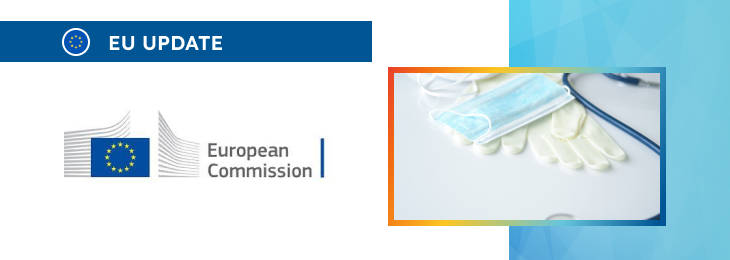The new article describes in detail the second section of the document addressing mostly the matters related to the risks associated with a medical device and information to be provided in this respect.

Table of content
The Medical Device Coordination Group (MDCG), an advisory body focused on further improvement of the medical devices regulatory framework, has published a guidance document dedicated to a summary of safety and performance (SSP) to be prepared by manufacturers responsible for products regulated as Class C and D medical devices under the applicable classification rules.
The document provides an overview of the applicable regulatory requirements, as well as additional clarifications and recommendations to be taken into consideration by medical device manufacturers and other parties involved in order to ensure compliance thereto.
At the same time, the MDCG reserves the right to make changes to the guidance and recommendations provided therein, should such changes be reasonably necessary to reflect corresponding amendments to the underlying legislation.
According to the guidance published by the MDCG, the Summary of Safety and Performance (SSP) template is designed to provide comprehensive information regarding the safety and functionality of self-testing medical devices.
This document aims to be a transparent source of key data, primarily for patients and laypersons, ensuring that they understand the specifics and key considerations for the safe usage of these devices. However, it is also important to mention that this SSP is not a replacement for the Instructions for Use or medical consultation.
The guidance further describes in detail specific sections of the document and outlines the key points to be covered in those sections.
Device Identification and General Information
As explained by the MDCG, this section offers a comprehensive identification overview of the device. It begins with the trade name, which serves as the commercial name under which the device is marketed.
The manufacturer’s name and address are intended to provide further information on the entity responsible for producing the device. Additionally, a unique Single Registration Number (SRN) is assigned to the manufacturer for identification purposes.
The device itself is assigned a Basic UDI-DI, serving as a unique identifier. Furthermore, an EMDN (European Medical Device Nomenclature) description offers a brief overview of the device’s main attributes as prescribed by the relevant European regulations.
The risk class of the device should also be specified, indicating the level of medical risk associated with the product when used for its intended purpose, together with the year of the device’s CE marking, awarded under the EU Regulation 2017/746.
If applicable, the section includes information on the authorized representative’s name and SRN, as well as the name and single identification number of the Notified Body responsible for validating the SSP.

Intended Purpose and Other Indications
The relevant section outlines the device’s intended use, including its primary functions, intended patient groups, and situations where the use of the device in question is recommended. It covers any specific indications where the device is particularly useful. The section also highlights any contra-indications or limitations that might preclude or restrict the use of the device.
Device Description
This section provides a detailed overview of the device’s features and functions. It begins with a general description, summarizing the device’s primary attributes, including its predecessors or variations.
For kit devices, the section should also provide a breakdown of all components, including their regulatory status, such as whether they are In Vitro Diagnostics (IVDs), general medical devices, or other types of equipment.
The description should then elaborate on how the device achieves its intended purpose, outlining its mechanisms or operational principles. The section also mentions any additional accessories or equipment that may be needed for the device to function optimally.
Harmonized Standards and Common Specifications
The respective section references any harmonized standards or common specifications applied to the device, ensuring it complies with relevant regulatory guidelines.
Risks and Warnings
This section provides information on potential risks associated with the device. It begins by explaining how potential risks are identified and managed, ensuring users understand the risk management strategies in place.
The section then discusses any residual undesirable effects or risks that may remain despite the relevant measures taken. It also provides warnings and precautions to ensure the safe use of the device.
Finally, the section summarizes any corrective actions taken, including field safety notices, to address potential issues.
Performance Evaluation and Post-Market Follow-Up
This section summarizes the performance and ongoing monitoring of the device in question. It begins by outlining the scientific validity supporting the device, including any relevant research or studies.
The section then presents performance data from studies conducted before the device received its CE marking or from equivalent sources, offering an overall assessment of its performance and safety.
Finally, the section describes any ongoing or planned post-market performance follow-up to monitor the device’s continued effectiveness and safety.
Metrological Traceability
According to the guidance, this section discusses the traceability of measurements related to the device. It begins by explaining the unit of measurement used, ensuring users understand how measurements are presented.
It then identifies any reference materials or procedures used to calibrate the device, ensuring its accuracy and reliability.
User Profile and Training
The relevant section provides guidance on the recommended user profile and training, if applicable. It also outlines any necessary skills or qualifications for using the device safely and effectively.
Revision History
In accordance with the applicable regulatory requirements, any and all changes made to the SSP should be duly documented and recorded in the document history section. It includes the revision number assigned to each update, the date the revision was issued, and a brief description of the changes made.
The section also notes whether the revision was validated by the Notified Body, along with the language in which the validation occurred.
Conclusion
In summary, the comprehensive SSP template is designed to provide clarity on all aspects of self-testing medical devices, from their design and performance to their safe usage and post-market follow-up. At the same time, MDCG additionally emphasizes the importance of consulting with healthcare professionals to ensure the device is used in a safe and efficient manner.
How Can RegDesk Help?
RegDesk is a holistic Regulatory Information Management System that provides medical device and pharma companies with regulatory intelligence for over 120 markets worldwide. It can help you prepare and publish global applications, manage standards, run change assessments, and obtain real-time alerts on regulatory changes through a centralized platform. Our clients also have access to our network of over 4000 compliance experts worldwide to obtain verification on critical questions. Global expansion has never been this simple.

